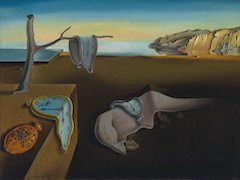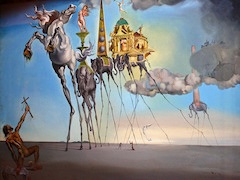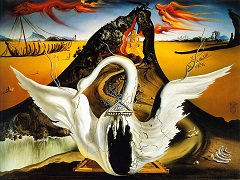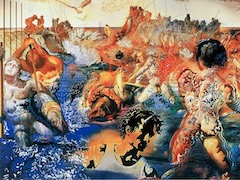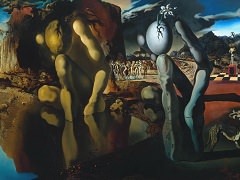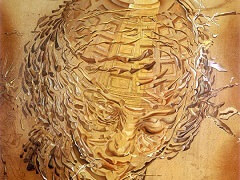The Ram, 1928 by Salvador Dali
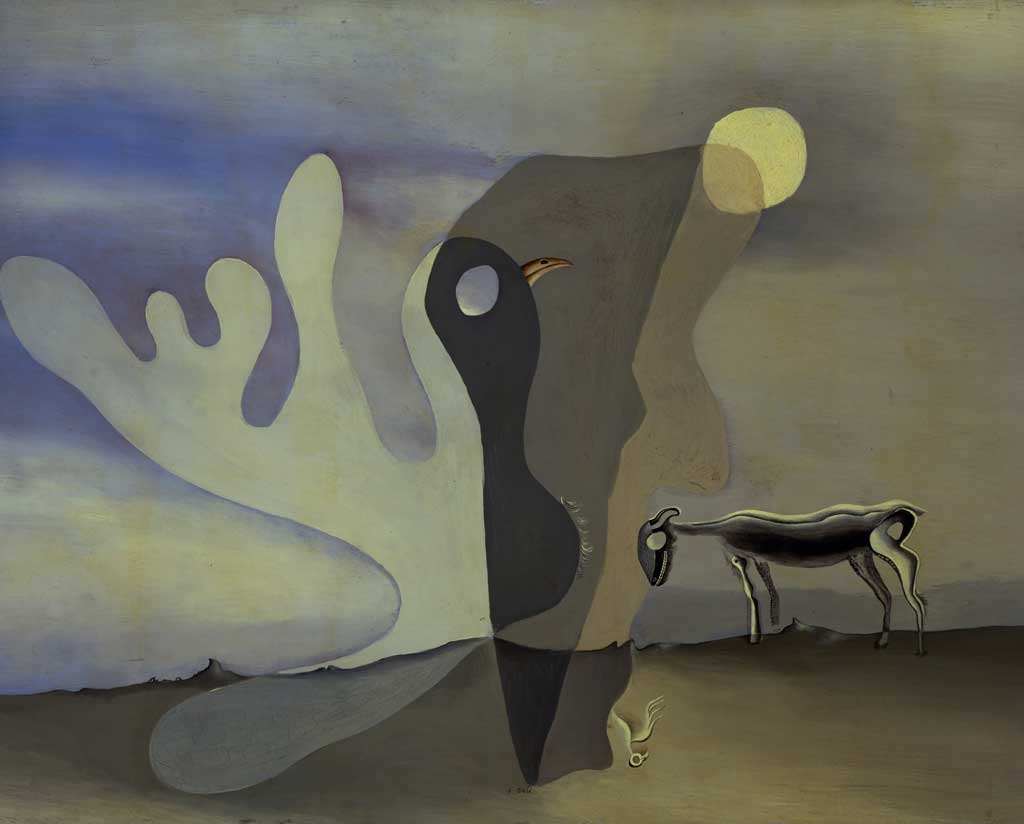
The Ram belongs to a series of paintings from 1928 in which a constellation of images (bird/moon/donkey/landscape/fish/female body) are organized along a symbolic axis.
The Ram foreshadows the inaugural filmic metaphor in Un Chien andalou, in which a man on a balcony looks out at the moon as a thin cloud cuts across its path. Symbolizing romantic love, the moon/cloud metaphor is then transformed in a horrific sequence in which the camera zooms in on a woman's eye as it is sliced by a razor blade. Indeed, a similar contrast of sentimentality with horror and abjection is suggested in The Ram, in which the profile of a face is transposed over a full moon beside the emaciated ram and the carcass of a rotting bird in the center foreground.
The Ram also attests to Dali's increasing formal debts to surrealist painting. The organic figuration of the face and bird are borrowed from the relief sculptures of Jean Arp (Picasso's dual frontal/three-quarter portraits are also in evidence), while the image of the ram is likely to have been inspired by Max Ernst's Belle Saison of 1925. Characteristically, Dali transforms his surrealist sources by developing an entirely personal and idiosyncratic iconography that would significantly inject new life into the surrealist movement by 1930.

